| Home Famous Horse Artists | First Posted Feb 8, 2007 Jan 21, 2020 | |
George Stubbs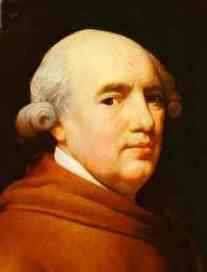 George Stubbs 1724-1806 George Stubbs is an artist who, in his time, was known only to a narrow circle of aristocratic sportsmen and horse lovers. Painters of his time considered him to simply be a horse-painter. In the 20th century the glory of Stubbs's paintings, and the full extent of his achievement were revealed. His charting of the equine skeletal and muscular system was quite extensive. Stubbs's horse paintings were portraits of his knowledge of physiology as well as his genius in art. The majority of his works remain in private collections. Many of them are still in the families for which they were originally painted. Recently, there was a showing of a compilation of his paintings at the Walters Museum, in Baltimore, Maryland. My husband and I were lucky enough to see it. George Stubbs's glory and expertise is now appreciated. He is gaining the mass recognition that he clearly deserves, and has taken his place as a master painter. George Stubbs was born in 1724 in Liverpool, son of a currier and one of five children. He had a minimum of formal instruction: in 1739 he was briefly a pupil of the minor painter Hamlet Winstanley. This was apparently enough to launch Stubbs off as a provincial portrait painter. As such he worked (1743-53) in Wigan, Leeds, York and at Hull. When at York he already knew enough anatomy to give private lessons to medical students at York Hospital and this led to his commissions in 1751 to illustrate a book on midwifery by Dr. John Burton. He learned enough of etching from a local engraver to etch the plates himself. His interest in anatomy and his study of it continued all his life. It proved to be important not only to his art but also as a major contribution to science. In 1766 his, "The Anatomy of the Horse,"
Stubbs expanded his paintings from portraitures of mounted sportsmen to hunting and racing. From the end of the 1760s he produced magnificent examples of the genre "The Melbourne and Milbanke Families" (1769-1770), John and Sophia "Musters Out Riding at Colwick Hall" (1777). 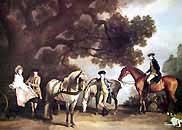 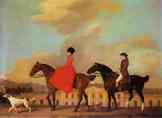 A separate development, beginning in the 1760s, was Stubbs's portrayal of wild animals. He painted horse and lion pictures, "Horse Attacked by a Lion" (1768-1772). In the 1770s, Stubbs embarked on new enterprises. He experimented with enamel painting. He consulted Josiah Wedgwood about the possibility of making large pottery plaques on which the enamel process could be used. Josiah Wedgwood invited Stubbs to stay at his Etruria headquarters and experiment. Stubbs lived with the famous potter in 1780, using the process on pottery plaques in portraits of Wedgwood and his family, creating experimental paintings on ceramics. In the great paintings that were still to come, he reverted to oils, mostly on smooth panels rather than canvas. An Associate of the Royal Academy in 1780, Stubbs was elected to full membership in 1781. The self-portrait of that year, executed in enamel on an oval "Wedgwood plaque Self-Portrait" (1781), shows him at fifty-seven. The Academy did not look kindly on experiments. Most of its members held to the conviction that painting in oils was the proper exercise of professional skill. Even watercolor was grudgingly admitted to its exhibitions. A great development of this decade was Stubbs's rendering of rural life and work. Two oil paintings on panel, "The Reapers" (1784) and "The Haymakers" (1785) are examples. In 1790s the Prince of Wales commissioned a painting of members of his favored regiment, "Soldiers of the 10th Light Dragoons." (1793) |
|
More Paintings by George Stubbs:
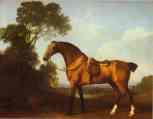 "A Saddled Bay Hunter" (1768)  "Huntsmen Setting Out from Southill, Bedfordshire" (1763-1768)  "Mares and Foals by an Oak Tree" (1764)  "Mares and Foals Disturbed by an Approaching Storm" (1764-1766)  "The Grosvenor Hunt" (1762) 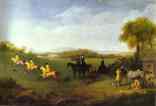 "Racehorses Belonging to the Duke of Richmond Exercising at Goodwood" (1760-1761) 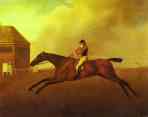 "Baronet with Samuel Chifney" (1791) There are many more paintings by George Stubbs, each one as wonderful as the next. Take a moment to research and enjoy them. |